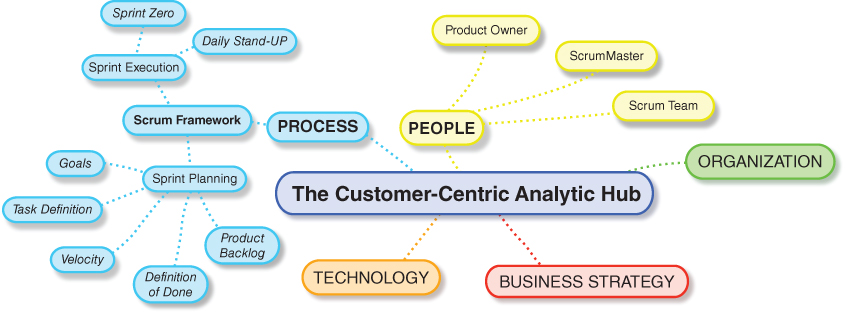Chapter 13The Analytic Sprint: Planning and Execution
In our previous chapters, we've covered processes and activities within the Scrum framework. In this chapter, our analytic team gets rolling on its project with sprint planning activities. Team members timebox their sprint planning session at two hours and use the time to review roles and responsibilities, define a sprint goal, and select backlog items that they believe they can complete during the sprint, based on their velocity. The team incorporates a definition of done into the task estimation to ensure high-quality, customer-ready deliverables (see Figure 13.1).

Figure 13.1 The Product Backlog Evolves over Time
Committing the Team
In Chapter 8 on analytic Scrum roles and responsibilities, we discussed three roles: the product owner, ScrumMaster, and development team, which can comprise any roles necessary to complete the work. In addition, you may identify a few extra roles that are important, whether related to organizational requirements or specific project needs. There's no one “right” team structure: As long as you have access to all of the knowledge that's required to get the work done, you can organize in whatever way makes sense.
Get Agile by Design now with the O’Reilly learning platform.
O’Reilly members experience books, live events, courses curated by job role, and more from O’Reilly and nearly 200 top publishers.

